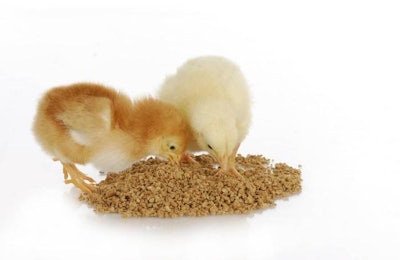
A quartet of U.S. poultry industry experts corrected misconceptions about how and why antibiotics and feed fillers are used (or not used) in broiler production in a question-and-answer session with the media earlier in 2015 at the Chicken Media Summit. The question is who learned more . . . the poultry industry experts or the media?
In a panel session, “Chicken Myths and Facts,” the poultry experts explained and, on many points, re-explained the basics of poultry husbandry and veterinary care to reporters whose biases and lack of knowledge are no different than the general public.
One media member’s question left the poultry experts seemingly dumbfounded at the lack of understanding: “Are chickens being fed fillers to plump them up?” The answer, supplied by Dr. Kate Barger, director of world animal welfare, Cobb-Vantress, is that poultry rations include only the best corn, soybean meal, vitamins and minerals. Anything less would result in skinnier, not plumper, chickens.
The questioning occurred as reporters, bloggers, and radio and TV journalists gathered on the eastern shore of Maryland to tour area broiler hatchery, grow-out and processing operations during the three-day event sponsored by the National Chicken Council and the U.S. Poultry & Egg Association.
This industry-to-media encounter revealed the potential difficulties of communicating information about the poultry industry to the public – in this case around 40 journalists, most of whom had limited understanding of agriculture or animal production. Despite the chasm of backgrounds and knowledge, both sides came away with new understanding.
Much of the questioning was thoughtful. For example, a journalist expressed honest befuddlement at the Chick-fil-A and McDonald’s announcements about sourcing poultry produced without antibiotics: “What is it that each of those companies said about the use of antibiotics in the production of the poultry they buy, and how are they different?”
John Glisson, vice president of research, USPOULTRY, responded, “Chick-fil-A said it would not source poultry where the birds had received any antibiotics...Compare that to the McDonald’s announcement which said it would no longer source poultry from birds that have been treated with medically important antibiotics...Those announcements got overlaid in the consumer’s mind that these were the same thing but are quite different.”
The McDonald’s sourcing program, Glisson further clarified, allows for the feeding of ionophores – not medically important in human medicine – to prevent necrotic enteritis in poultry flocks.
He posed the potential ethical dilemma involved in antibiotic-free poultry production. Some flocks become sick and need antibiotics treatment, and treatment cannot be withheld. The ethical dilemma is avoided by treating any flock needing antibiotics and diverting it to conventional production.
Perhaps anticipating an area of potential misunderstanding with the term “antibiotic-free poultry,” Glisson stressed that no poultry meat contains antibiotics; withdrawal periods prior to slaughter ensure their absence. “The term, 'antibiotic free,'” he explained, “refers to the production practices followed in the growing of the birds. In production of conventional poultry, the use of antibiotics is not a food safety-meat issue.”
What did the poultry experts learn from their interaction with the media?
- According to Christine Daugherty, vice president, animal well-being programs and technology, Tyson Foods, the poultry industry needs to do a better job at communicating its positive story. Jenny Rhodes, extension educator, Agriculture & Natural Resources, Queen Anne’s County, Maryland, agreed saying the industry has done a great job, but farmers tend to be private folks who don’t brag and avoid attention.
- Be ready to take advantage of the media’s natural curiosity about the poultry industry, Glisson recommended, and take advantage of the opportunity to educate the public about the industry’s practices.
- Think closely and critically about the messages the poultry industry sends to the public, advised Barger. Those messages occur continually, whether it is when the public is driving past a truck in route to a processing plant or when they are visiting a poultry production facility.
These experts demonstrated what it takes to bolster trust in the poultry industry by dealing responsively with tough questions. Every industry member needs to be prepared to communicate poultry’s positive story. A big part of the challenge is to understand public perception and be ready to address the issues in a positive way.


















